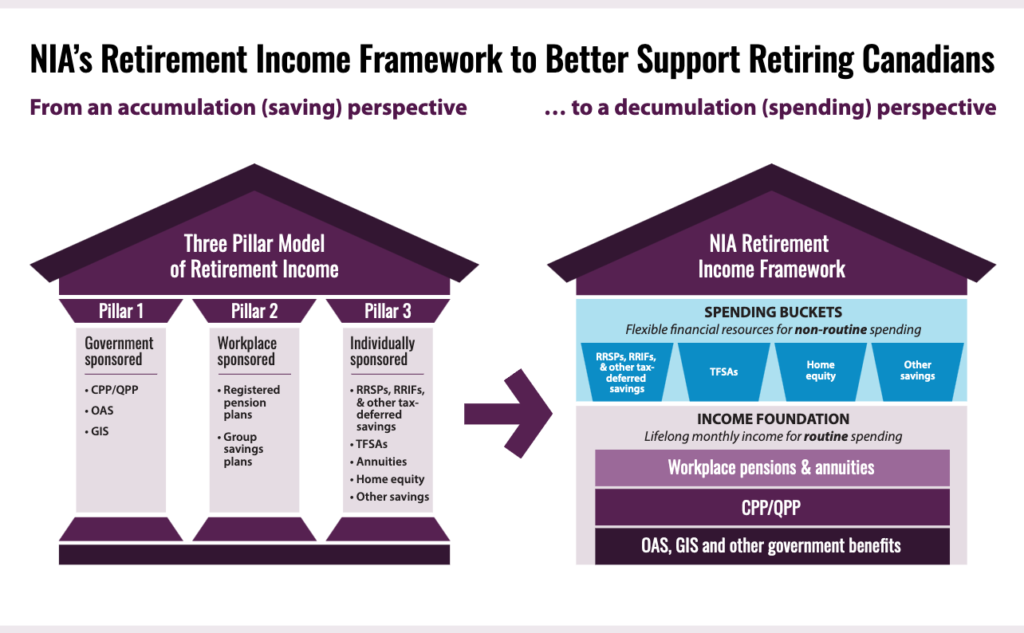
By Steve Lowrie, CFA
Special to Financial Independence Hub
Having an emergency fund is common advice, whether you are reading this in the financial media or hearing it from a financial advisor. Many people who are later in life and feeling comfortable with their financial situation might disregard this advice, assuming it only applies to those that don’t have as much financial stability.
The truth is that an Emergency Fund is something that everyone (even you!) should have. In addition, the added financial security planning of a Lifestyle Reserve should also be part of your financial plan. So, let’s explore exactly what an Emergency Fund is, how a Lifestyle Fund is different, and why both should be in place to ensure long-term financial alternatives and adaptability. Most importantly, I’ll highlight how this applies to Suzie & Trevor Hall (The Accumulators) and Jim & Carol Oates (Almost Ready to be Retirees), so you can see how it can work for you.
What is an Emergency Fund / Rainy-Day Fund / Financial Cushion and Why do I Need it?
Let’s talk about an Emergency Fund, which is often used interchangeably with Financial Cushion or Rainy-Day Fund. They are close but have slightly different purposes. An Emergency Fund / Rainy-Day Fund is a safety net for unexpected financial surprises; this could be an immediate need to replace a furnace or roof, an unforeseen job loss, or a medical condition requiring unpaid time off from work. An Emergency Fund / Rainy-Day Fund would generally be kept in cash in a separate account from day-to-day-expenses, usually in a high-interest savings account.
On the other hand, a Financial Cushion is more of a buffer to cover elevated or lumpy day-to-day or month-to-month costs like a higher than usual heating or grocery bills, etc. A Financial Cushion is often kept in the main bank account in cash, just to keep a financial safety margin-of-error to allow for a secure feeling about covering regular expenses.
Whether we say Emergency Fund or Rainy-Day Fund or Financial Cushion, they are similar, so let’s simplify the definition: a liquid/cash reserve to cover unforeseen and unbudgeted for expenses which allows for financial stability and peace of mind.
You may already have this is place, without formal planning. The next question you should ask yourself is whether you’ve set up your Emergency Fund / Financial Cushion in a way that truly provides the stability and comfort that you need.
Before we dive into that, let’s hear what New York Times Bestselling author and one of MarketWatch’s 50 most influential people, Morgan Housel, shared in his book, The Psychology of Money: Timeless Lessons on Wealth, Greed, and Happiness:
“The biggest single point of failure with money is a sole reliance on a paycheck to fund short-term spending needs, with no savings to create a gap between what you think your expenses are and what they might be in the future.”
How much should my Emergency Fund be?
So, let’s explore some questions about an Emergency Fund:
- How much of an Emergency Fund / Financial Cushion is needed?
- How long will it take to build a strong Emergency Fund /Financial Cushion?
I know you hate to hear it but, as with many financial planning questions, the answer is “It depends!” But I won’t leave you hanging; let me give you an idea of factors to consider when building your Emergency Fund:
- Current and Future Financial Outlook: Have you just started a new business and don’t have a good handle on your upcoming income? Alternately, do you have a stable job that you feel fairly confident on relying on that income for the foreseeable future? Another consideration is potential upcoming surprises – Is a new baby on the horizon? Will your grown kids need financial support? Do your properties and/or vehicles have any approaching maintenance or replacement needs? Or, do you have parents who may need financial support as they age? Keeping these, and other potential unforeseen expenses in mind, will help you determine the ideal size of your Emergency Fund; at least 3-6 months of necessary expenses is ideal, but a 1-month Emergency Fund might be appropriate, in some financially stable situations.
- Risk Tolerance: The size of your Emergency Fund / Financial Cushion is also dependent on your own personal financial risk tolerance. Although some people may feel completely comfortable with 1–2-months of necessary expenses for their Financial Cushion, others may feel the strong urge to keep 12 months aside. Whatever the amount is that will allow you to sleep at night is a good indicator.
- Balancing the Budget for Current & Future Needs: How quickly you can build your Emergency Fund is highly dependent on how much of your existing income can be diverted to fund it. That may mean reallocating a portion of your long-term savings or tightening the discretionary spending belt until you’ve built your Financial Cushion to the level of comfort you need.
- Opportunity Cost: Some people want to hold too much in cash, which may be a financial security blanket, but keeping more than needed is detrimental in the long run because “money in the mattress” could be used to build wealth. So, when deciding how much your Financial Cushion should be, consider that keeping too much will cost you in lost investment opportunity.
To hammer home the importance of an Emergency Fund / Financial Cushion and the financial benefits it provides, let’s hear a little more advice from Morgan Housel in The Psychology of Money: Timeless Lessons on Wealth, Greed, and Happiness:
“Saving does not require a goal of purchasing something specific. You can save just for saving’s sake. And indeed, you should … Saving is a hedge against life’s inevitable ability to surprise the hell out of you at the worst possible moment … Savings without a spending goal gives you options and flexibility, the ability to wait and the opportunity to pounce. It gives you time to think. It lets you change course on your own terms.”
“Six months’ emergency expenses means not being terrified of your boss, because you know you won’t be ruined if you have to take some time off to find a new job.”
Even though everyone’s talking about Emergency Funds and Financial Cushions (and that’s a great starting point), let’s look at the bigger picture and think about long-term financial security. To do that, we want to focus on Lifestyle Reserve.
What is a Lifestyle Reserve / Cash Wedge and Why do I need it?
You may have heard me talk about a Lifestyle Reserve in my previous blogs, Using a Lifestyle Reserve To Ride Out Market Storms and Play It Again, Steve – Timeless Financial Tips #6: Aligning Your Investments with Your Investment Time Horizon. A Lifestyle Reserve, or sometimes referred to as a Cash Wedge, is essentially enough money in safe investments to cover your spending needs; this can be (and often is) at retirement or it could also be needed to supplement income in working years to meet your lifestyle needs. For clarity, I’m talking about the lifestyle to which you’ve become accustomed or the level of lifestyle you want, which would include both “needs” spending (non-discretionary) and “wants” spending (discretionary). So, your lifestyle needs would include vacations, club memberships, gifts to kids, charitable donations, etc.
A Lifestyle Reserve / Cash Wedge should be secured in a low-risk manner: cash or high-quality, short-term fixed income investments, which may produce a lower-than-expected return on investment but is exposed to significantly less volatility to ensure that your principle is preserved. Continue Reading…







